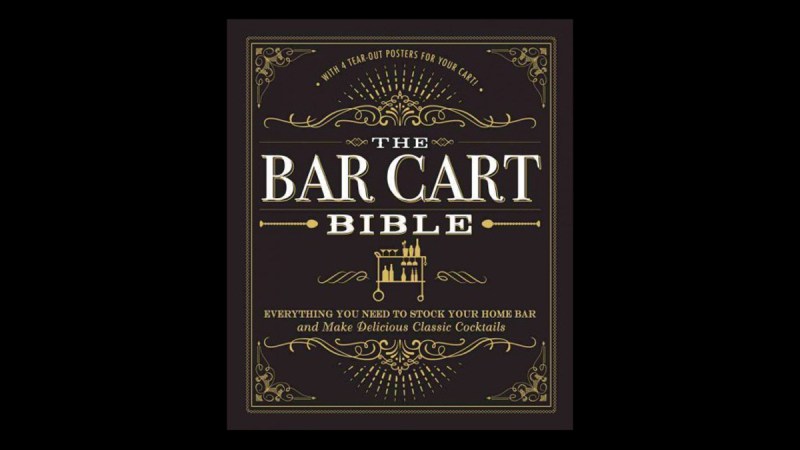If you go to any bookstore, or look on any e-commerce site, you’re going to find a lot of cocktail books. (The Wine & Spirits section of books on Amazon yields over 10,000 results alone). Those books, though, range wildly, from self-published tomes to high-production cocktail books from the best bars in the world. If you’ve never made a drink in your life, though—or if your drink-making is limited to pouring booze in a Solo cup and topping it with a mixer and maybe adding a lime wedge—then the majority of these books aren’t for you. There’s nothing wrong with that, mind you, it’s just how it is. There’s no point in learning how to freeze-dry ingredients or how to cook certain things sous vide if you don’t know the difference between a Manhattan and a Martini.
That is where The Bar Cart Bible: Everything You Need to Stock Your Home Bar and Make Delicious Classic Cocktails (Adams Media, 2017) comes in. It is one of the better books out there for the bartender who is looking to up his game from zero. With easy-to-follow directions and a good deal of information packed into 223 pages, this book is great for the newbie or to give as a gift if you need something to go with that bottle of bourbon you’re giving your brother-in-law because you don’t really talk to him but know he likes to drink.

The first three sections and the appendices are the most useful parts of this book. Section 1 covers cocktail basics (if you’ve never made a drink more complicated than a vodka cranberry, start here) and Section 2 covers the equipment you’ll need—glassware and tools—to make most of the cocktails you’ll need to worry about when starting out. Section 3 covers basic ingredients, helping you stock your bar cart with the necessary booze and accoutrement for the cocktails located in the next sections of the book. The appendices are great for when you’ve got a little bit of cocktail knowledge under your belt and want to start improving on the ingredients that you’re using. Appendix A covers cocktail additives such as as syrups and mixers and Appendix B is a US/Metric conversion chart for those of us that don’t know how to convert those in our heads (read: probably everyone reading this).
The majority of the book, obviously, is devoted to cocktails. There are eleven sections covering everything from beer cocktails to shots and shooters to seasonal drinks. The cocktails are not complicated, and the directions are easy to follow. Spread throughout, too—and this helps make the book more engaging—are various fun facts and historical tidbits about the various sections. For example, did you know the Tequila Sunrise was created to welcome tourists to Acupulco and Cancun in the 1950s? You do now. There are numerous classic cocktails within the pages of The Bar Cart Bible, as well as others that you might not see on many menus, but are worth a shot, anyway.
Below, we’ve included two cocktails to get you started: The Brain Hemorrhage and the Commodore.
Brain Hemorrhage
- 1 oz peach schnapps
- .25 oz Irish cream
- .25 oz grenadine
Method: First, pour the peach schnapps into a shot glass. Slowly add the Irish cream, and it will clump and settle at the bottom. Next, slowly pour the grenadine to give it a bloody, disgusting brain-hemorrhage look.
The Commodore
- 2 oz rye whiskey
- 1 oz fresh lemon juice
- 1 oz simple syrup
- 2 dashes orange bitters
Method: Combine the ingredients in a shaker with ice. Shake well. Strain into a cocktail glass.




